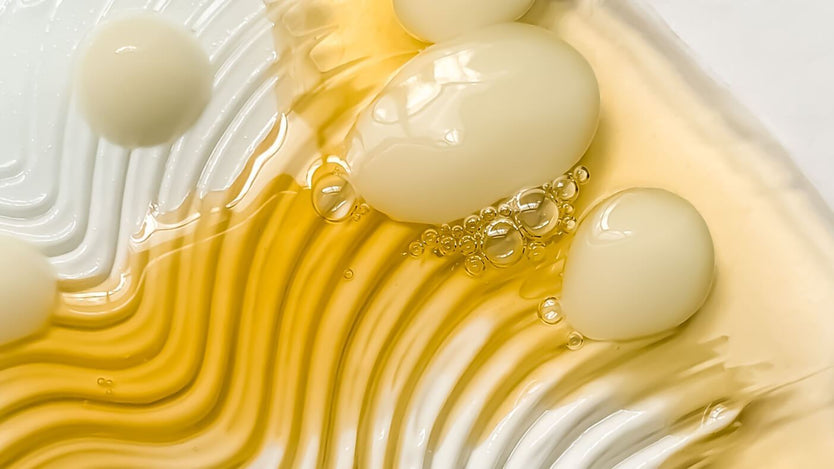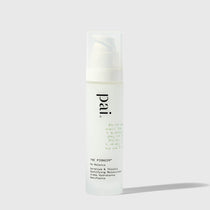Combination skin may be the most common skin type, but it can also be one of the trickiest to handle. That’s why we’ve pulled together the complete guide to caring for a combination complexion, from knowing whether you have it to the products you need in your skincare kit to keep it happy and healthy.
Read on for expert tips on the characteristics of combination skin, how to deal with a face that has different needs in different areas, and why everything from the cleanser you use to the makeup you apply can be tailored to bring it back into balance.

What does combination skin mean?
A cocktail of at least two skin types in one, combination skin is usually oily in some areas and balanced or dry in others. For most people, the oily skin tends to be around the nose, chin and forehead, while the cheeks and jawline may be drier (or at least less shiny).
Given that your T-zone has more oil glands, this makes perfect sense. But rather than being pretty balanced all over, combination skin has a bit of everything going on, with too much oil here and not enough hydration there.
So if you’re finding flaky bits in one area and feel a little greasy in others, your face isn’t having a meltdown - it’s just classic combination skin.

How to tell if you have combination skin
First things first: identify whether you have combination skin. While everyone finds their T-zone is a little oilier than the rest of their face, those with so-called normal, balanced skin will barely notice it - and those with oily skin will see shine all over.
Combination skin, meanwhile, tends to experience extremes. Skin will be notably more oily, particularly on the forehead or around the nose, while your cheeks and jawline may be dry and flaky. With combination skin, pores are usually larger and more noticeable too, particularly on and around the nose - which could mean you spot a few blackheads too.
A contradictory skin type, combination skin often means dealing with blemishes (typically associated with oily areas) and dryness at the same time.
Take note after you’ve cleansed and map out any differences you can see in the mirror. If it's hard to tell from your bare cleansed face, some experts suggest the sunscreen test: apply your SPF all over, and note where your skin looks shiny. If your T-zone looks greasy while your cheeks are matte and shine-free, you most likely have combination skin.
Still not sure? Book a skin consultation to talk it through with a pro - they'll know the right questions to ask to narrow down your skin type so you can tailor your routine to its needs.

What causes combination skin?
Unsurprisingly, our skin type is often determined by plain old genetics - so if your parents had combination skin, you might too. Or perhaps one was dry, one was oily, and you're the perfect blend of both. It's all in your DNA.
Of course there are other causes at play too. Your skin is your biggest organ and reflects what's going on inside and out, so environmental factors can have a huge impact. Extreme weather - be it harsh cold winters or too much time in the sun - can strip your skin of moisture, drying out areas that were already lacking in hydration while convincing oily patches that a sebum boost is required, exacerbating existing issues. Stress is another trigger for excess oil, leading to blemishes and breakouts - while dry areas might begin to feel irritated.
It may also be your own handiwork - literally - that's causing your complexion to experience a bit of everything. Touching your face too much will add grime and additional oil to your skin, and you'd be surprised at how often you do it without noticing throughout the day.
It's also worth looking at your skincare routine; using the wrong products for your skin's needs could even cause the oily or dry patches you're experiencing. Formulas which are too drying will cause flakiness while setting off your skin's sebum production to overcompensate, while anything too rich or heavy could clog an oily T-zone.
The key is to rebalance and decongest the skin with products specially designed for your skin type.

Caring for combination skin
So how exactly do you balance your combination skin? Essentially, your skin is requiring you to multitask, juggling the different needs of different areas without upsetting the other.
This may sound high maintenance, but arming yourself with the knowledge of what works and what to avoid will help bring your skin into manageable balance in no time. Try the following tips and you should soon see a difference in the demands of your skin.
Don’t touch your face
When it comes to dealing with the oily areas, cleanliness is of the upmost importance - because grease, grime and bacteria can only lead to more grease and grime with the addition of blackheads and breakouts.
Try not to touch your face too much throughout the day (no matter how clean you think your hands may be) and avoid using your fingers to apply your make-up. Make sure your make-up brushes and sponges are clean, too - you don’t want any lurking bacteria to cause more problems for your pores.
Use specialist skincare
Looking after combination skin isn’t about changing your skin type altogether. It’s simply a case of getting it under control. By using the right formulas for your skin’s specific needs, you can reduce excess oil and soothe dry skin in one, as well as helping to minimise pores. The tricky bit is finding ingredients that will add moisture where needed without increasing shine where it’s not wanted.
To bring skin back into balance, avoid harsh detergents and alcohol-rich formulas which will strip the skin - this will only cause your oily areas to worsen and your dry patches to become sore and irritated. Instead, look for products that will support the skin’s natural oil balance, soothe the delicate moisture barrier and purify congested pores.


Our organic products for sensitive skin do just that. If in doubt, always start with your cleanser. The most important step of your routine, using a cream cleanser like Middlemist Seven will respect your skin's delicate pH balance while lifting away impurities thanks to its trio of skin-soothing oils - so every inch of your skin will be left feeling calm and collected.
Our hero mattifying moisturizer The Pioneer helps to rehydrate with its fast-absorbing and non-greasy finish, while the alcohol-free Century Flower Tonic feeds the skin with nutrients to soothe stressed skin without causing sensitivity.
To see real results, add an oil into the mix. Congested combination skin types will love Carbon Star, our overnight clarifier for blemish-prone skin - especially as it'll help to calm sebum production in those oily areas.
On nights when you need more of a repair job, use our bestseller, Rosehip Bioregenerate Oil. The multitasker will tackle dryness, dullness, blemishes and redness - and when you're dealing with combination skin, it's likely you'll be battling all of the above. A few drops of our wonder oil and you'll see the difference in no time.
Not sure where to start? Book in for a free skin consultation with our coaches to help nail down what will work best for you.
Choose lightweight make-up
Skincare doesn't stop with, well, skincare. Your make-up matters too. As well as being wary of how you apply it, think about what you're applying and what ingredients you’re layering on to your skin.
Combination skin can make application difficult given that you're dealing with different textures - what works for drier areas might not look so flawless on that oily T-zone, leading to patchy, uneven make-up. Opt for non-comedogenic (non pore-blocking) formulas with lightweight textures, such as a serum foundation, cream blusher or mineral powders. A primer might also be a sensible step to add before your base.
Think of them as the base coat before you dive in with the paint; a primer creates a smooth, even canvas, which makes makeup application easier as well as making sure it lasts longer (and fewer touch-ups is a win for your combination skin). A primer can offer an airbrush effect for larger pores, smooth over fine lines and even reduce shine if it's silicone-based - in which case, use sparingly and stick to the T-zone.
Depending on where your skin feels on the scale of dry vs oily, you may find a water-based foundation complete with a targeted touch of finishing powder is enough to keep things looking even.
Every skin type has its needs, and with combination skin it can seem as though you’re inundated with requests - but with the right products you can keep it under control. Shop our combination skin range for balancing formulas that really work.

















































